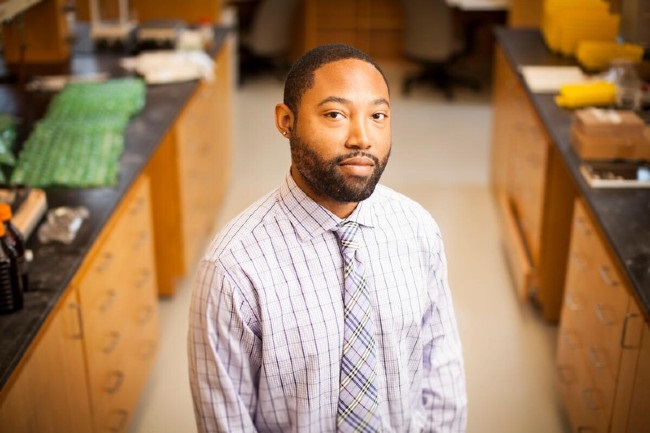by Skylar Cuevas
THE IDEA
With modern-day cancer therapeutics presenting adverse side effects to heart health, scientists are studying methods to attack cancer cells without the risk of damaging the heart. Researchers Steven Townsend, associate professor of chemistry, and Neil Osheroff, John Coniglio Professor of Biochemistry and professor of medicine, synthesized the biological compound arimetamycin A, shown to kill cancer cells in mice without harming the heart.


Natural isolated products from soil bacteria known as anthracyclines are currently being used as cancer therapeutics. Chosen because of their inexpensive cost and high level of toxicity to tumors, specific anthracyclines, including doxorubicin and daunorubicin, also attack the heart in the process of killing cancer. To synthesize arimetamycin A, Townsend and his team modified the carbohydrate, or sugar, portions of anthracyclines and then fine-tuned their activity, increasing toxicity levels toward cancer cells while decreasing the adverse effects on the heart. The synthesis and promising results could lead to less harmful cancer drug discovery.
“One molecule [of doxorubicin] kills 10 cancer cells. Our improvement to the drug can kill 1,000,” Townsend said.
WHY IT MATTERS
According to Townsend, in a clinical setting medical doctors play a delicate game when prescribing medication to kill cancer. They aim to prescribe enough to kill the cancer but not in an amount that could potentially harm the heart. With the synthesis of less cardiotoxic drugs, the future of healthier cancer therapeutics advances forward.
For decades, researchers have struggled with the improvement of drugs due to a lack of technology and resources. The difference between then and Townsend and Osheroff’s current discovery lies in access to molecular modeling, cellular-level imaging techniques and a deeper understanding of how these drugs work.
Chemists continue to build upon not only new discoveries but also standstills from previous research endeavors that advance our understanding of cancer therapeutics. “In 2021, we have a much better idea of exactly how these [drugs] slide and bind to DNA compared to previous decades. With that enhanced understanding, we know how to modify the drugs to fine-tune their activity,” Townsend said. “If you look at most famous chemists now, they are excellent at going back to the literature to see what ideas people had then that they couldn’t figure out. Modern skillsets, tools and better technology help us do this in a more designed way.”
WHAT’S NEXT
Even though the research team validated that arimetamycin A is more cytotoxic than current cancer therapeutics, Townsend aims to further increase the drug’s toxicity levels while decreasing cardiotoxicity. Another avenue for new research will involve attaching the new anthracyclines (known as a payload) to an antibody, to study targeted delivery of the drug to tumors. These antibody-drug conjugates allow increased drug levels at the tumor site while avoiding cardiotoxicity completely.
FUNDING
This research was funded by the National Institutes of Health grants 1R35GM133602 and 449R01GM126363.
GO DEEPER
The article “Synthesis and Cytotoxic Evaluation of Arimetamycin A and Its Daunorubicin and Doxorubicin Hybrids” was published in the journal ACS Central Science on July 22.